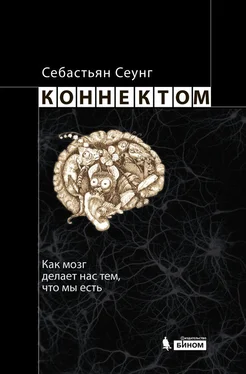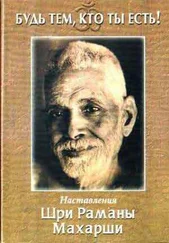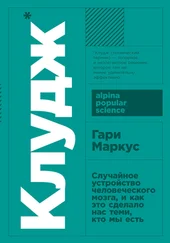56. Chalfie, M., J. E. Sulston, J. G. White, E. Southgate, J. N. Thom son, and S. Brenner. 1985. The neural circuit for touch sensitivity in Caenorhabditis elegans. Journal of Neuros cience , 5 (4): 956.
57. Changeux, Jean-Pierre. 1985. Neuronal man: The biology of mind. New York: Pantheon.
58. Chen, B. L., D. H. Hall, and D. B. Chklovskii. 2006. Wiring optimization can relate neuronal structure and function. Proceedings of the National Academy of Sciences , 103 (12): 4723.
59. Chklovskii, D. B., and A. A. Koulakov. 2004. Maps in the brain: What can we learn from them? Annual Review of Neuroscience , 27: 369–392.
60. Clarke, Arthur C. 1973. Profiles of the future: An inquiry into the limits of the possible , rev. ed. New York: Harper & Row.
61. CMS Collaboration. 2008. The CMS experiment at the CERN LHC. Journal of Instrumentation , 3: S08004.
62. Cohen, L. G., P. Celnik, A. Pascual-Leone, B. Corwell, L. Faiz, J. Dambrosia, M. Honda, N. Sadato, C. Gerloff, M. D. Catalá, et al. 1997. Functional relevance of cross-modal plasticity in blind humans. Nature , 389 (6647): 180–183.
63. Coleman, M. 2005. Axon degeneration mechanisms: Com mona lity amid diversity. Nature Reviews Neuroscience , 6 (11): 889–898.
64. Conel, J. L. 1939–1967. Postnatal development of the human ce rebral cortex . 8 vols. Cambridge, Mass.: Harvard University Press.
65. Conforti, L., R. Adalbert, and M. P. Coleman. 2007. Neuronal death: Where does the end begin? Trends in Neurosciences , 30 (4): 159–166.
66. Connors, B. W., and M. J. Gutnick. 1990. Intrinsic firing patterns of diverse neocortical neurons. Trends in Neuros cien ces , 13 (3): 99–104.
67. Corkin, S. 2002. What’s new with the amnesic patient HM? Nature Reviews Neuroscience , 3 (2): 153–160.
68. Courchesne, E., and K. Pierce. 2005. Why the frontal cort ex in autism might be talking only to itself: Local over-connectivity but long-distance disconnection. Current Opinion in Neurobiology , 15 (2): 225–230.
69. Courchesne, E., K. Pierce, C. M. Schumann, E. Redcay, J. A. Buckwalter, D. P. Kennedy, and J. Morgan. 2007. Mapp ing early brain development in autism. Neuron , 56 (2): 399–413.
70. Cowan, W. M., J. W. Fawcett, D. D. O’Leary, and B. B. Stanfield. 1984. Regressive events in neurogenesis. Science , 225 (4668): 1258.
71. Cramer, S. C. 2008. Repairing the human brain after stroke: I. Mechanisms of spontaneous recovery. Annals of Neurology , 63 (3): 272–287.
72. Davis, Kenneth C. 2005. Don’t know much about mythology: Everything you need to know about the greatest stories in human history but never learned. New York: HarperCollins.
73. Davis, N. Z. 1983. The Return of Martin Guerre . Cambridge, Mass.: Harvard University Press.
74. Davis, N. Z. 1988. On the lame. American Historical Review , 93 (3): 572–603.
75. DeFelipe, J. 2010. Cajal’s butterflies of the soul: Science and art. New York: Oxford University Press.
76. DeFelipe, J., and E. G. Jones. 1988. Cajal on the cerebral cortex . New York: Oxford University Press.
77. Denk, W., and H. Horstmann. 2004. Serial block-face scanning electron microscopy to reconstruct three-dimensional tissue nanostructure. PLoS Biology , 2 (11): e329.
78. Dennett, Daniel Clement. 1978. Brainstorms: Philosophical essays on mind and psychology. Montgomery, Vt.: Bradford Books.
79. Desimone, R., T. D. Albright, C. G. Gross, and C. Bruce. 1984. Stimulus-selective properties of inferior temporal neurons in the macaque. Journal of Neuroscience , 4 (8): 2051.
80. Devlin, K. 2010. The unfinished game: Pascal, Fermat, and the seventeenth-century letter that made the world modern. New York: Basic Books.
81. Dobell, C. C. 1960. Antony van Leeuwenhoek and his “little animals”. New York: Dover.
82. Dobson, J. 1953. Some eighteenth century experiments in embalming. Journal of the History of Medicine and Allied Sciences , 8 (Oct.): 431.
83. Doupe, A. J., and P. K. Kuhl. 1999. Birdsong and human speech: Common themes and mechanisms. Annual Review of Neuroscienc e, 22 (1): 567–631.
84. Draaisma, D. 2000. Metaphors of memory: A history of ideas about the mind. Cambridge, Eng.: Cambridge University Press.
85. Draganski, B., C. Gaser, V. Busch, G. Schuierer, U. Bogdahn, and A. May. 2004. Neuroplasticity: Changes in grey matter induced by training. Nature , 427 (6972): 311–312.
86. Draganski, B., C. Gaser, G. Kempermann, H. G. Kuhn, J. Wink ler, C. Buchel, and A. May. 2006. Temporal and spatial dynam ics of brain structure changes during extensive learning. Journal of Neuroscience , 26 (23): 6314.
87. Drexler, K. E. 1986. Engines of creation: The coming era of nano technology. New York: Anchor.
88. Dronkers, N. F., O. Plaisant, M. T. Iba-Zizen, and E. A. Cabanis. 2007. Paul Broca’s historic cases: High resolution MR imaging of the brains of Leborgne and Lelong. Brain , 130 (5): 1432.
89. Dudley, R. 2008. Suicide claims two men who shared one heart. islandpacket.com. Apr. 5.
90. Eccles, J. C. 1965. Possible ways in which synaptic mechanisms participate in learning, remembering and forgetting. Anatomy of Memory , 1: 12–87.
91. Eccles, J. C. 1976. From electrical to chemical transmission in the central nervous system. Notes and Records of the Royal Society of London , 30 (2): 219.
92. Eccles, J. C., P. Fatt, and K. Koketsu. 1954. Cholinergic and inhibitory synapses in a pathway from motor-axon collaterals to motoneurones. Journal of Physiology , 126 (3): 524.
93. Edelman, Gerald M. 1987. Neural Darwinism: The theory of neuronal group selection. New York: Basic Books.
94. Eichenbaum, H. 2000. A cortical-hippocampal system for declarative memory. Nature Reviews Neuroscience , 1 (1): 41–50.
95. Elbert, T., and B. Rockstroh. 2004. Reorganization of human cerebral cortex: The range of changes following use and injury. Neuroscientist , 10 (2): 129.
96. Elbert, T., C. Pantev, C. Wienbruch, B. Rockstroh, and E. Taub. 1995. Increased cortical representation of the fingers of the left hand in string players. Science , 270 (5234): 305.
97. Eling, P., ed. 1994. Reader in the history of aphasia: From Franz Gall to Norman Geschwind . Amsterdam: John Benjamins.
98. Epsztein, J., M. Brecht, and A. K. Lee. 2011. Intracellular determinants of hippocampal CA place and silent cell activity in a novel environment. Neuron, 70 (1): 109–120.
99. Euler, T., P. B. Detwiler, and W. Denk. 2002. Directionally selective calcium signals in dendrites of starburst amacrine cells. Nature , 418 (6900): 845–852.
100. Fahy, G. M., B. Wowk, R. Pagotan, A. Chang, J. Phan, B. Thomson, and L. Phan. 2009. Physical and biological aspects of renal vitrification. Organogenesis , 5 (3): 167.
101. Fee, M. S., A. A. Kozhevnikov, and R. H. Hahnloser. 2004. Neural mechanisms of vocal sequence generation in the songbird. Annals of the New York Academy of Sciences , 1016: 153.
102. Fehér, O., H. Wang, S. Saar, P. P. Mitra, and O. Tchernichovski. 2009. De novo establishment of wild-type song culture in the zebra finch. Nature , 459 (7246): 564–568.
103. Felleman, D. J., and D. C. Van Essen. 1991. Distributed hier archical processing in the primate cerebral cortex. Cerebral Cortex , 1 (1): 1.
104. Fiala, J. C. 2005. Reconstruct: A free editor for serial section microscopy. Journal of Microscopy , 218 (1): 52–61.
Читать дальше
Конец ознакомительного отрывка
Купить книгу




![Рейчел Херц - Почему мы едим то, что едим [Наука о том, как наш мозг диктует нам, что есть]](/books/390411/rejchel-herc-pochemu-my-edim-to-chto-edim-nauka-o-t-thumb.webp)
![Алан Джасанов - Мозг - прошлое и будущее [Что делает нас теми, кто мы есть]](/books/401119/alan-dzhasanov-mozg-proshloe-i-buduchee-chto-delaet-thumb.webp)






